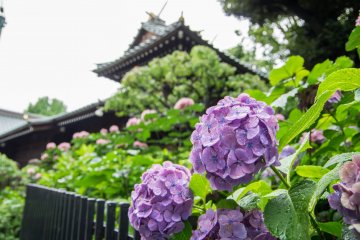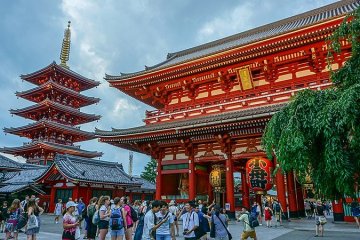

东京的地平线上最新的增加物就是新的东京Skytree。它被设计成一个电视,广播塔。东京Skytree是这个商业中心的中心装饰品,众所周知,它以成为东京的一个标志。它是世界最高的无支柱型广播电视塔并在建力士里创造了世界新纪录。它非常高,所以有许多优势的地方去观察城市。自从它完成以来已经接纳了数百万的参观者。
Skytree的两个观察甲板都提供了城市里让人非常激动的风景。低的甲板,被称为展望板,高达350米,它提供了一些城市最好的风景。展望台被分为三层。第一层有着壮观的玻璃窗和壤板。可以让人们感受到地面上风吹时的感受。一家茶店也坐落在这一层,它提供了广泛搭配的茶点,比如热饮料和小吃等。
第二层则是纪念品商店和武藏天空饭店。准备好引诱你未发现的味觉。武藏天空饭店以唯一的一家融合了日本-法国调理法而有名的饭店。如果你感到饿或有一些动摇,你或许会远离武藏饭店。与其排队等待相当于8美元的饭菜,还不如去一家不用等待的饭店。花钱在Skytree附近的小一点的餐厅或者小摊也是一个很好的方法。
展望台的最后一层是观察台。这一层的顶部有一个巨大的窗户,它让访问者观赏到其它景点所没有的,东京独一无二的风景。在Skytree最好的时光就是太阳下山前,城市里的灯光开始闪烁的时候。
许多东京的标志,比如·Diamond和Flower Ferri Wheel都可以从塔上看到。乘着一套电梯将访问者从展望台连接到上面的展望走廊。展望走廊坐落与高处,所以有着 ‘世界最高的人行天桥’的绰号。展望走廊待征着一面大窗户,旁边就是一条通往塔上的一条螺旋斜道。
位于螺旋斜道的顶部是一个小小的休息区域和另外一个观察台。这第二个观察台所看重的是塔里最高的地方,而这对于访问者来说是很有利用价值的。它的入口位于Skytree商业中心的四楼,这里掩盖了押上站和东京Skytree站之间。两个车站都可以走去目的地。
Tokyo Skytree Station, Oshiage Station, Asakusa Station.

NOHGA HOTEL AKIHABARA TOKYO is conveniently located in the midst of the electric town Akihabara, also known as the capital of manga and anime. In addition, this neighborhood has an abundance of tech shops, maid cafes and a variety of restaurants. With just a 6-minute walk away from Akihabara station, it provides easy access to explore other areas nearby such as Ueno and Asakusa. This hotel embodies the rich cultures of music, art and food. Nohga’s concept of music is derived from Akihabara’s local history, starting as a district of radio and wireless component merchants in the late 1920s. The artistic and luxurious space throughout the hotel is achieved by featuring art and amenities designed in collaboration with craftsmen from around Japan. As for the food menu, it’s seasonal fresh ingredients are sourced domestically. The glasses and dinnerware served are collaborations with stores in the surrounding area. All 120 non-smoking guest rooms feature an ensuite bathroom with a rain shower, in-room safety box, mini fridge, USB plugs, free Wi-Fi, a high-quality bluetooth speaker and flatscreen TV with original music and film. The lounge area and a compact 24-hour gym can be found near the reception on the second floor. Services include laundry (from 2,750JPY) and a 24-hour front desk with a check-in time of 3PM and check-out time of 11AM. For sightseeing you can rent a Tokyobike for the day (2,000 JPY/day) to explore the vicinity.

Oakwood Premier Tokyo comes from a brand of standout luxury hotel & service apartments right at the heart of the Tokyo metropolis. It is located in the business hub of Marunouchi with JR Tokyo Station in close proximity. This will allow guests and travelers to easily access the city's extensive transport network and visit various landmarks such as Imperial Palace, Tsukiji Fish Market, Ginza and Shopping District. Boasting 123 luxurious apartments on the upper floors of a multi-serviced complex, each room offers a magnificent view of the city, not to mention all furnished and a fully-equipped kitchen set which is rarely seen in your everyday service apartment. Without doubt, these spacious tranquil retreats are curated to give you the amenities and services of a luxury hotel and a feeling of home. They are good options for both business executives and leisure travelers from one night of a short-stay to a few weeks/months of mid-to-long-term stay.

紫阳花,又名绣球花。在日本的梅雨季节,也就是5月底至6月中旬,正是这美丽的花盛开的季节。在街角巷落,都能看到开着五颜六色的紫阳花。 梅雨季节的天空总是阴沉沉的,然而一簇簇鲜艳的紫阳花点缀了这个雨季。 那么就来看看东京最值得去观赏紫阳花的几个地方吧。
![Moomin House Cafe Tokyo Skytree Town Solamachi [Closed] Moomin House Cafe Tokyo Skytree Town Solamachi [Closed]](https://a1.cdn.japantravel.com/photo/poi-254-212160/360x240!/tokyo-moomin-cafe-tokyo-skytree-town-solamachi-store-212160.jpg)
Enter the world of Moomin, the Finnish fairy-tale comic characters, in the exclusive Moomin Café in Tokyo Skytree Town. This permanent Moomin Café is specially designed for Moomin fans and offers dishes, desserts, drinks and decorations on the Moomin theme. Whether you are alone or eat in company, a plush Moomin figure will keep you company at the table. The figures of the Moomins are hippopotamus-like troll creatures and were invented by the writer Tove Jansson. They love in the idyllic Moomin Valley somewhere in Finland. The Moomin characters are very popular worldwide and their adventures have been translated into more than 30 languages. There is another highlight for real Moomin fans: The "Moominvalley Park" theme park was opened in March 2019 about 40 kilometers northwest of Tokyo in Saitama prefecture and offers further insights into the world of trolls.

Ayam-YA is a certified halal ramen restaurant found in the Okachimachi area of Tokyo, between Asakusa and Ueno, and not far from Assalaam Mosque. A sister branch in Kyoto also exists.

Bunny Cafe Moff Rell in Tokyo's Chiyoda Ward offers a chance to interact with adorable rabbits. You can make reservations for the cafe by phone, or you can visit and pay at the store before entering. The cafe provides 30- and 60-minute courses, and you can play with or feed the bunnies. If you are unsure about how to treat the rabbits, don't worry! The staff members will kindly explain everything to you. Minimum age is 10 years old.

Sumida Aquarium has been bringing aquatic wonders to the Tokyo Skytree area since 2012. The aquarium is a two-floor housing complex for over 10,000 animals. With its artificial seawater system, the aquarium also reduces CO2 emissions in ways that most other aquariums do not. The aquarium centerpiece--a 350,000-liter tank--is the largest of its kind in Japan and is home to penguins and fur seals. The aquarium lies in the West Zone of Tokyo Skytree Town on the 5th and 6th floors. Instead of following lines or pre-chosen routes, guests are instead free to find their own way through the aquarium and enjoy the aquatic animals from many angles. There are also many seating areas scattered throughout the aquarium to enhance watching experiences and allow visitors to take a break while they wander. As of 2020, the Sumida Aquarium has also added a jellyfish exhibition area. Watch jellyfish float beneath you in a surreal alien landscape from the viewing platform. More than 500 moon jellyfish are illuminated in this area and create a one-of-a-kind view. The gift shop is where you can find all kinds of merchandise and stuffed animals of your favorite aquarium inhabitants. Visit the café and restaurant for a snack or a meal, and be impressed by their themed foods.

The Asakusa Culture Tourist Information Center (浅草文化観光センター, Asakusa bunka kankō sentā) is an eight story building designed by Kengo Kuma. The top floor contains a free observation deck and a cafe with views onto Sensoji temple and the Nakamise shopping street.

Senso-ji Temple (浅草寺, Sensōji) is a popular spot for omikuji, or fortunes. These auspicious sheets are offered in a multitude of languages, enticing both Japanese and foreigners alike to see how their luck plays out. If the number you draw is less than lucky, don’t worry – simply tie up the offending fortune on the nearby wires and allow your bad karma to be spirited away. The temple also shares its grounds with the Asakusa Shrine, dedicated to the three men credited with the temple’s founding. Considered one of the oldest original buildings in Tokyo, the shrine plays host to the exuberant Sanja Matsuri every May. Another popular building (and photo spot) is the five-story pagoda A number of other festivals take place at Senso-ji throughout the year. The Kinryu-no-mai (Dragon Dance) can be enjoyed on March 18th and October 18th, when a large golden dragon on poles is paraded through the streets. Visitors on April 14th can witness the Sagi-no-mai (White Heron Dance), which features a parade of participants in both Heian-era outfits and heron costumes. In late autumn, the temple’s atmosphere grows even more exuberant during its end of the year rake fairs. Buyers come to purchase one of the many colorfully adorned tools in the hopes of raking in good fortune in the coming year. It is arguably one of the most popular tourist destinations in the city, Senso-ji Temple – also known as Asakusa Kannon – can trace its roots back to the early 600s. In 628, two fishermen on the nearby Sumida River repeatedly brought up a golden statue of the Buddhist goddess of mercy along with their usual catch. Finally deciding not to throw the statue back to the depths of the river once more, they instead brought it to their village headman, who convinced them to build a temple in its honor. Senso-ji Temple was finished in the year 645 and quickly became a pilgrimage site. Its popularity endured over the centuries and even continues in the present day, with most visitors making this one of their first stops in Tokyo. The road leading up to the temple, known as the Nakamise-dori or “street of inner shops”, peddles everything from lacquered chopsticks and ukiyo-e prints to cheap keychains and colorful trinkets. Cake-like ningyoyaki¸sweet treats that are served hot off the iron grill, are a popular purchase, as are warming cups of amazake in the winter months.